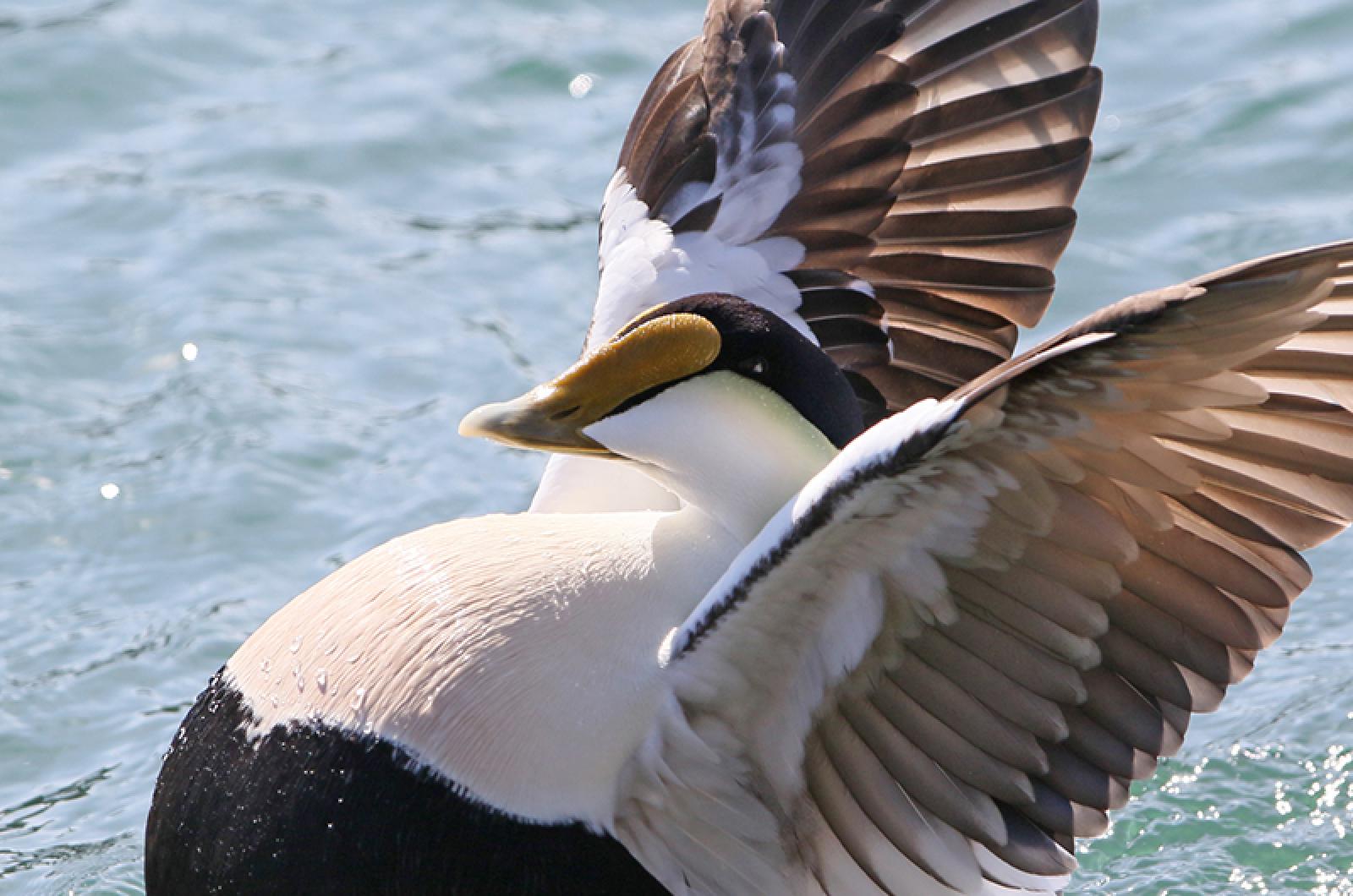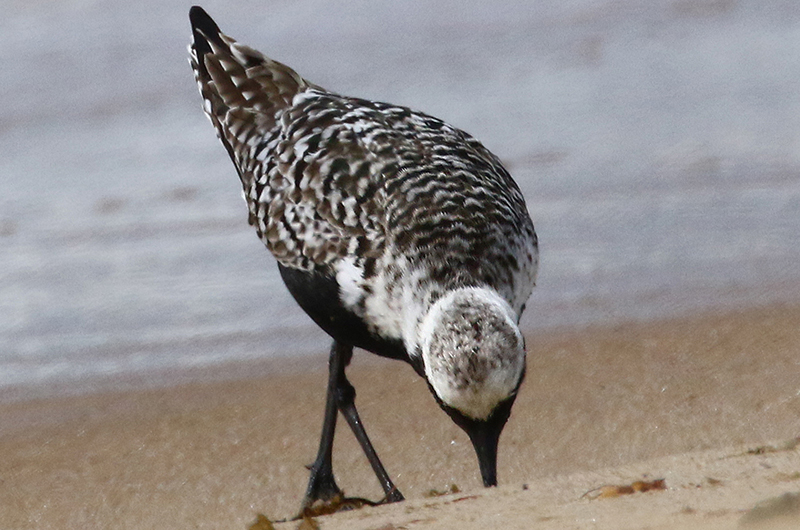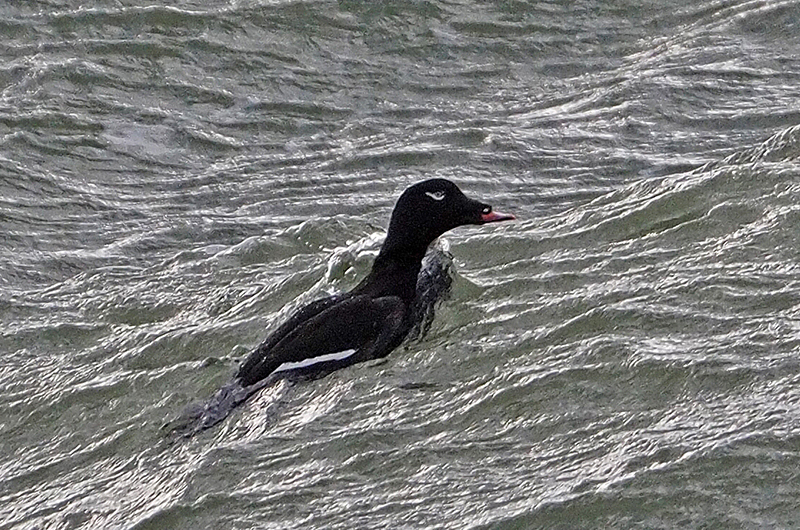The weather is getting hot as I write this on July 4, though there are no complaints here as our highs are forecast to be in the upper 70s. Given climate change and global weirdness, most of the country would be happy with such temperatures. Nevertheless, as days are now getting shorter, let’s start with a brief reminder of winter.
Seth Buddy reports two common eiders at Great Rock Bight on June 29. Isaiah Freedman visited Lucy Vincent Beach on July 3 and spotted six white-winged and four black scoters.
Common loons have been reported from multiple locations: Bob Shriber found one at Lobsterville on June 30, David Benvent saw one from the Steamship Authority on July 2, and Matthew Woodward observed one off State Beach on July 3. Great blue herons have been seen by Matthew Born at a pond along Clay Pit Road on June 28, and Bob Shriber spotted two in the West Basin on June 30, the same day I spotted one along the edge of a pond at the Wakeman Center. Ring-billed gulls have been spotted by Shea Fee on Cape Poge on June 29, and by David Benvent at Lighthouse Beach on July 1. Okay, these are not winter-time abundances; small numbers of these species often hang around through the summer.
The most exciting sighting was on June 29 at Sepiessa Point. David Benvent spotted the first spotted sandpiper of the southward migration season. This species seems to nest across Massachusetts and throughout the northern half of the country, so how come they do not nest here? Also of note are two glossy ibis — the first of the year — spotted by Shea Fee at Pocha Pond Preserve on June 29.
Other shorebirds include David Padulo’s two black-bellied plovers on Norton Point Beach on June 28, The Felix Neck Early Birders program spotted a black-bellied plover on June 30, and the next day Shea Fee saw two lesser yellowlegs on Cape Poge. The southbound migration is just getting started.
Live shearwaters are still around. Scott Weiman saw one Wilson’s storm-petrel, two Cory’s shearwaters, 18 great shearwaters and five sooty shearwaters on June 30 — all about 10 miles southwest of Nomans Land. About five miles west of Aquinnah he also spotted three Cory’s and 20 great shearwaters on June 28. Offshore from the Gay Head cliffs on that day, Matthew Born spotted six Cory’s and 150 great shearwaters. Matthew Born and Bob Shriber spotted lower numbers over the next two days.
The only report I have gotten of dead birds comes from Bob Woodruff, who found three shearwater carcasses offshore from Edgartown Great Pond on July 3. There were none on the beaches of Cedar Tree Neck on July 2. By all means let’s keep the live shearwaters around but hopefully the cascade of carcasses washing up on our beaches has ended.
Jeff Bernier reports a flock of at least 20 molting mallards at Butler’s mudhole. Most male ducks have molted out of their showy breeding finery, so their plumage resembles the females of the species. This is called eclipse plumage and will last for a few more months.
I found two yellow-throated warblers — not to be confused with common yellowthroats — on June 30 along John Hoft Road. One bird has been seen since May, but as far as I have heard, this is the first report of two adults. I watched them for 10 minutes but did not see either one carrying food or feeding a youngster. If such nesting evidence is found, it likely would be the first nesting record for Massachusetts.
Holly Mercier enjoys hearing the noisy and conspicuous baby titmice in and around her yard. I saw a family of titmice in my yard and another at Cedar Tree Neck on July 2. Their call was a loud, repeated “jeeer” or “teeer.” Rick Duarte, Phebe Bates, George Stein, Catherine Brennan and Dinah Reese have also been enjoying these family antics.
Eastern whip-poor-wills have been reported in June from Dike Road and near Wasque on Chappaquiddick by Shea Fee, Ian Davies, David Benvent and Hatsy Potter. In Aquinnah they have been heard by Bob Shriber and Matthew Born. Their close cousin, the Chuck-will’s widow has been reported by Hatsy Potter and others from Dike Road, and Grace Simpkins heard one near Wasque on June 25. Both species are more widespread across the Island, though not as common as they used to be.
Ruby-throated hummingbirds are ever popular. They have been reported by Kirstin Lee at Chockers Lane on June 28, Bob Shriber along West Basin Road on June 30, Cynthia Bloomquist at home on June 30, Seth Buddy at Cedar Tree Neck on July 1, Carleton Simonin at his feeder on July 2, Kathy Landers at home that same day, Luanne Johnson at home on July 3 and Claire Schlaikjer at Polly Hill Arboretum on July 3. Their southward migration starts in early August.
Steve Allen and Al Sgroi are the leaders for the Felix Neck’s Early Birders program. They had another great walk on June 30, finding 43 species. Shea Fee counted an amazing 17 saltmarsh sparrows on Cape Pogue and the Pocha Pond Preserve on June 29; this secretive species is more common that we think. I heard a rose-breasted grosbeak singing in an unexpected location — near the main parking lot at the hospital on July 1. On July 4, Bob Woodruff visited Edgartown Great Pond and spotted two adult bald eagles being harassed by crows.
Youngsters of the following species have been observed this week: red-bellied woodpecker by Julia Austin; great crested flycatcher by Thaw Malin and Cynthia Bloomquist and by Nicola Blake; tree swallows by Steve Allen; northern oriole by Rick Duarte; and mute swan by Luanne Johnson.
Also of note, Margeret Curtin, Luanne Johnson and Shea Fee watched a northern harrier make a prey drop along Atlantic Drive a few weeks ago.
Please email your sightings to birds@mvgazette.com.
Robert Culbert is an ecological consultant with Nature Watch LLC, living in Vineyard Haven.









Comments (1)
Comments
Comment policy »